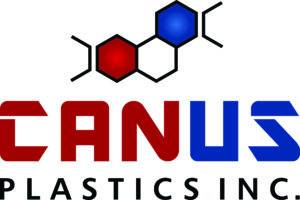Plastic welding is simply using heat to join two or more pieces of plastic together. In spite of this simplicity, choosing the right type of welding and materials and then performing the operation under variable conditions can be complex and daunting for some customers. And that’s where the specialists at CANUS of Ottawa Ontario come in.
CANUS uses Hot Air, Freehand, Extrusion and Hot Plate Welding at their facility in Ottawa-Gatineau while also offering these technologies as mobile services that can come right out to your job site. Mobile welding services can prove critical for repairs and construction when time is a factor or when the item to be welded is simply too large or complex to move to our facility.
Hot Air welding uses a specially designed heat gun to produce a jet of hot air that softens the plastic interface of both parts to be joined, along with a plastic filler rod. Generally, all three components must be the same or very similar plastics. However, PVC can be welded to Acrylic using this technology.
Freehand welding uses a jet of hot air which is applied to the weld area along with the tip of a plastic welding rod. As the rod softens it is pushed into the joint and fuses with the parts being welded.
With Extrusion welding the welding rod is actually drawn through a hand-held extruder which plasticizes the rod. The rod is then applied against the weld area which is already softened by a jet of hot air from the extruder gun. Extrusion welding is very useful in welding larger items such as those exceeding 6 mm or 0.25 inches in thickness.
Hot Plate or Butt Fusion welding uses a special fixture that contains a heated plate. The two parts to be welded (such as pipe or tubes) are placed in the fixture and on opposite sides of the Hot Plate. The fixture has temperature and timer controls to ensure the parts reach their specific melting point, whereby the hot plate is removed and the parts pressed together at a set pressure and for a set duration of time. The permanent bond created upon cooling can result in two parts that are practically inseparable as if they were one. This method is popular in the construction of elaborate piping systems.
CANUS uses all of these methods to weld Polypropylene, Polycarbonate, PVC, CPVC, HDPE, LDPE, ABS, Acrylic and Nylon. There are many applications for welding including repairs and construction on tanks, ducting, piping, boats, playground structures, recreation vehicles and larger plastic parts.

